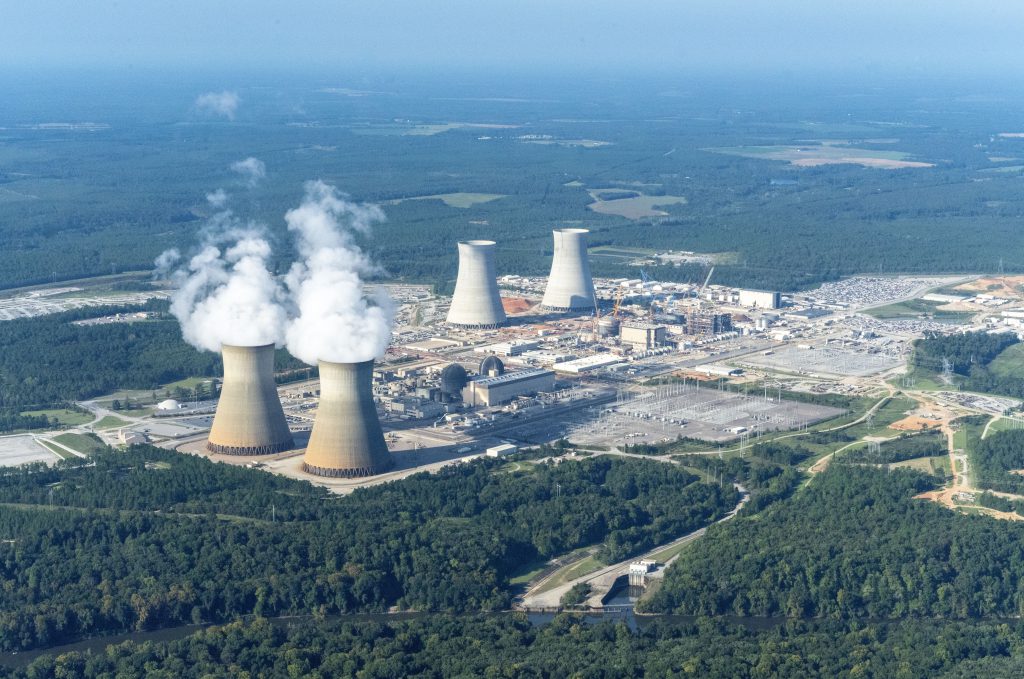“In 2001, 30 new reactors were ordered in the U.S., but the so-called “nuclear renaissance” rapidly fizzled leaving only Georgia Power and Vogtle. Meanwhile, renewable energy, in particular solar power, has become abundant and cheap, and solar and wind have been the fastest-growing energy sector for the past several years.”
BY: GLENN CARROLL | augustachronicle.com

In 1977, a small group of thoughtful, committed Georgians started a grassroots anti-nuclear group to oppose nuclear power, nuclear weapons and radioactive waste and to promote alternative visions for renewable energy and world peace.
At the same time, Georgia Power was resuming construction of Vogtle 1 and 2, having nearly gone bankrupt three years earlier while attempting to build a four-reactor nuclear compound with a budget of $1 billion.
Only 10 weeks after breaking ground, incredibly, Vogtle construction ground to a halt with Georgia Power on the brink of bankruptcy. Georgia Power was saved by two emergency rate hikes thanks to the Georgia Public Service Commission and by selling shares of its hole-in-the-ground Vogtle to most of Georgia’s rural electric cooperatives and municipal power systems.
So, in 1977, construction started back up for a two-unit Vogtle with a $640 million budget. In 1979, the year Georgia Power predicted would see blackouts without more power supply, Georgia Power was instead the most overbuilt utility in the country.
Vogtle was only 1% complete and it was clear that there was no need for additional power, yet Georgia Power stubbornly stuck to its nuclear goals and in 1989, Vogtle 1 and 2 came on-line at a cost of $6.4 billion — a whopping 1,000% over budget.
There are many compelling arguments against nuclear power: the risk of a catastrophic accident, out-of-control construction costs and the still-unsolved radioactive waste problem. Nuclear reactors produce materials that can be used to make nuclear weapons. Nuclear radiation exposure can cause birth defects and cancer.
And then there’s that whiff of corporate socialism arising from nuclear’s dependence on government subsidies.
All of these negative factors have spun the present-day global nuclear industry into a downward spiral towards obsolescence. Reactors are retiring faster than they are coming online.
In 2001, 30 new reactors were ordered in the U.S., but the so-called “nuclear renaissance” rapidly fizzled leaving only Georgia Power and Vogtle. Meanwhile, renewable energy, in particular solar power, has become abundant and cheap, and solar and wind have been the fastest-growing energy sector for the past several years.
This is the historic crossroads at which Georgia Power now finds itself building the only new reactors in the United States.
Lessons learned? Let’s take a look.
Some things remain the same. The unfinished Vogtle project’s budget and construction timeline have already doubled, and experts are saying Georgia Power is destined to go even further over budget and miss the deadline. Again.
In the most recent construction monitoring report filed with the PSC, the company claims to have spent more than $1.5 billion in construction costs over the most recent six months. Those are total costs, Georgia Power only reports its 45.7% share of project costs which are $701 million for the six-month period.
These skyrocketing costs, amounting to $8.5 million every day, have gone up, according to Georgia Power because of high absenteeism and the loss of skilled craft and management, at least in part because of having more than 800 cases of COVID-19 sidelining workers and crews since the pandemic began.
Nuclear Watch South has conducted legal interventions before the PSC to call for the cancellation of Vogtle, showing that Vogtle is still not needed using Georgia Power’s own annual report performance data.
Compiling 10 years of figures from Georgia Power’s SEC-filed annual reports tells a revealing story — Georgia Power’s electricity sales remain flat, showing an annual growth rate of less than .3%.
Georgia Power’s existing portfolio of electric capacity is chronically underutilized. Last year, Georgia Power idled 31% of its existing capacity, even after shutting down 3,000 megawatts of polluting coal plants.
Vogtle, if it is ever finished at a projected price tag of $27 billion, will add a puny 6% capacity — a radioactive capacity that the company simply does not need.
But here’s the real shocker: Georgia Power’s profits have somehow skyrocketed in the midst of the Vogtle construction debacle.
Georgia Power profits jumped by 20% when Vogtle construction began, steadily rising from the new high watermark. The regulated monopoly posted a whopping 20.5% profit in 2019!
So one lesson was clearly learned by Georgia Power: It may not have yet learned how to pull off construction of a nuclear reactor, but it sure has mastered the art of making money.
Georgia law empowers the PSC to cancel an unneeded power project. The same law protects Georgia Power to recover costs which were prudently invested in the canceled project, barring fraud or malfeasance.
Georgians do not need to have one more dime extracted from them to build an unneeded radioactive waste factory in these times of economic downturn and ever-present fear of a novel coronavirus.
Here at the crossroads of history in 2020, there has never been a better time to stop Plant Vogtle.
The writer is coordinator of Nuclear Watch South, formerly Georgians Against Nuclear Energy. She has been active in nuclear issues for more than 30 years.
